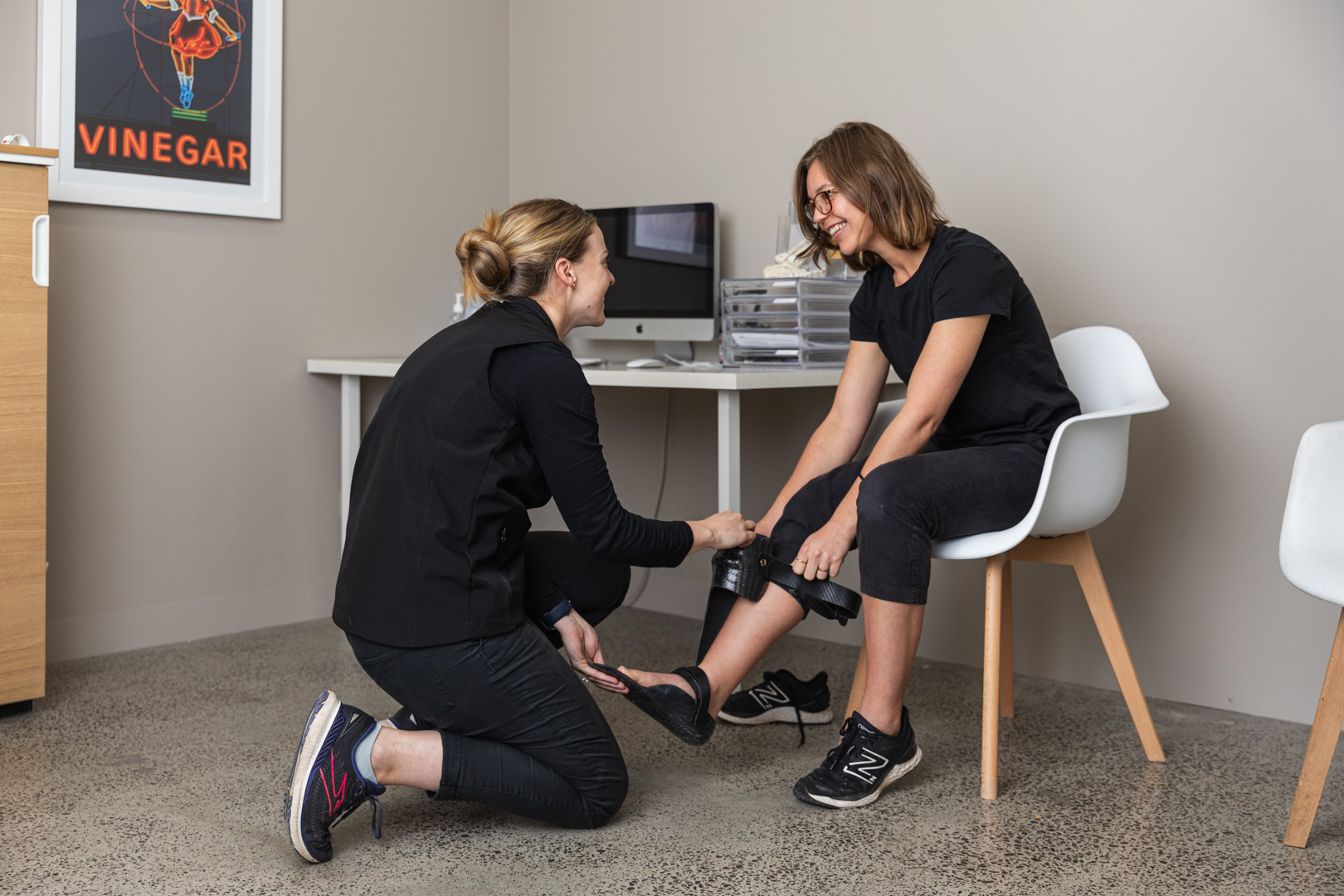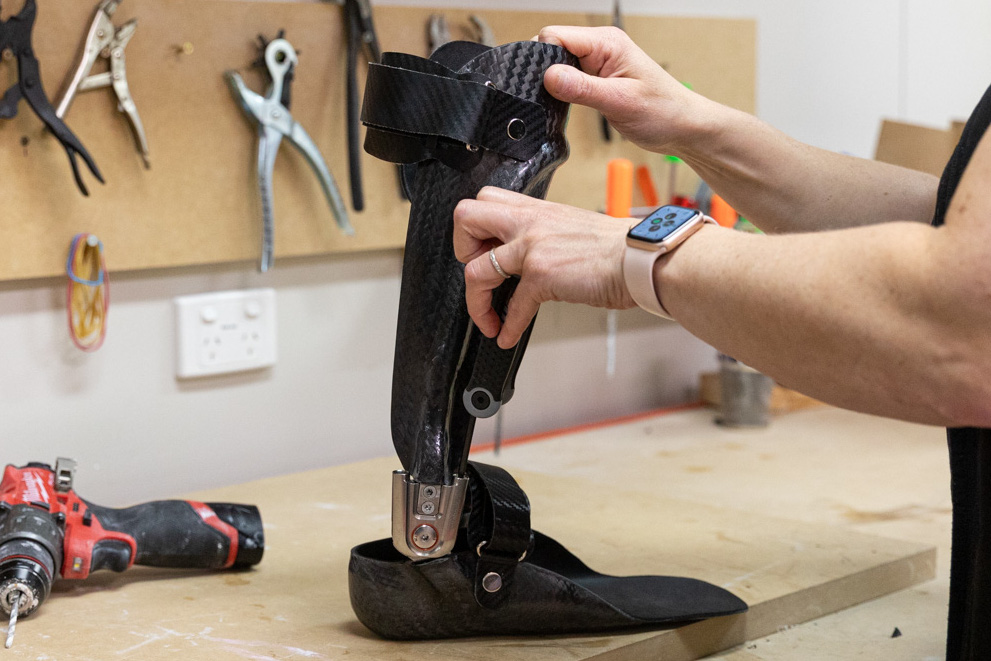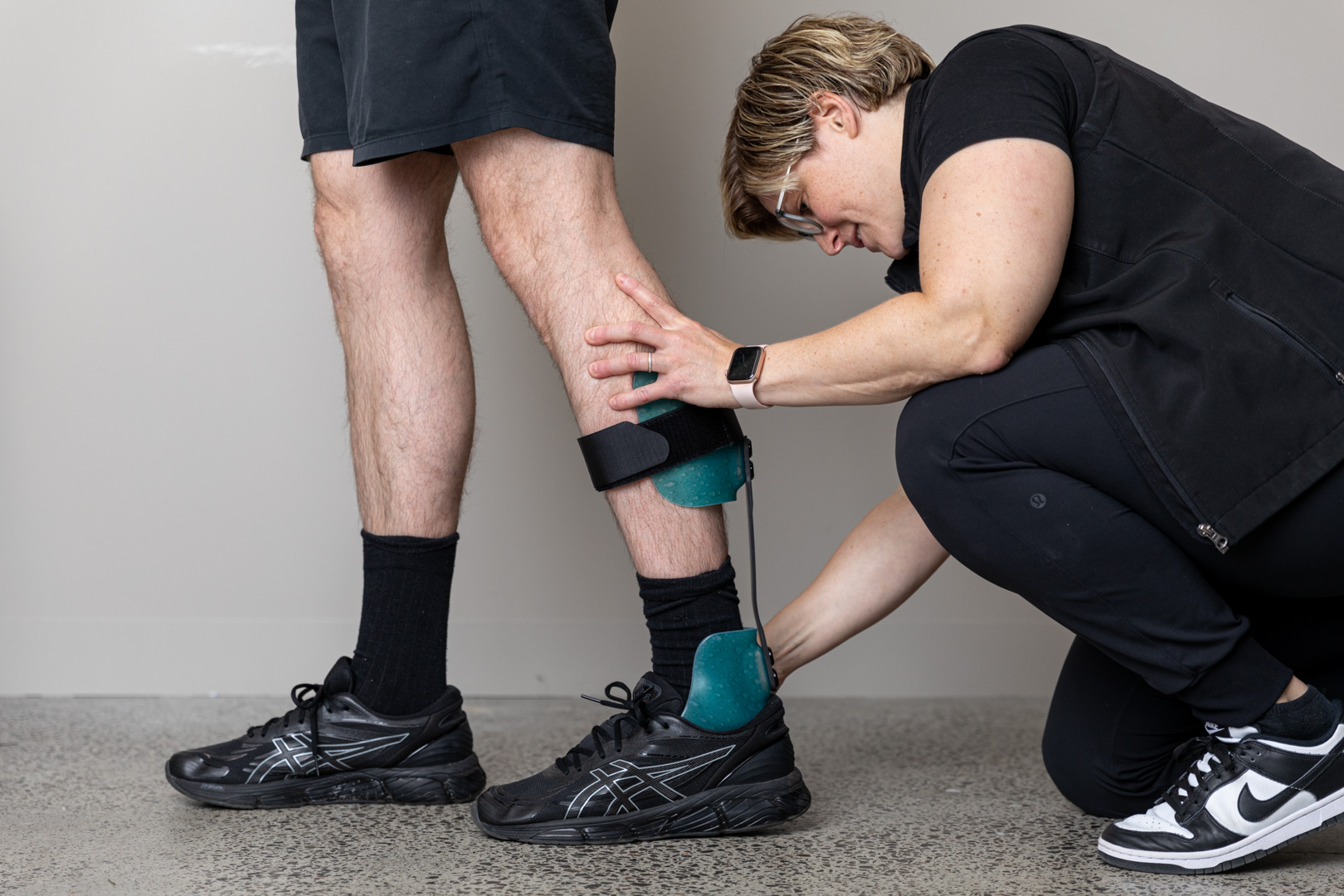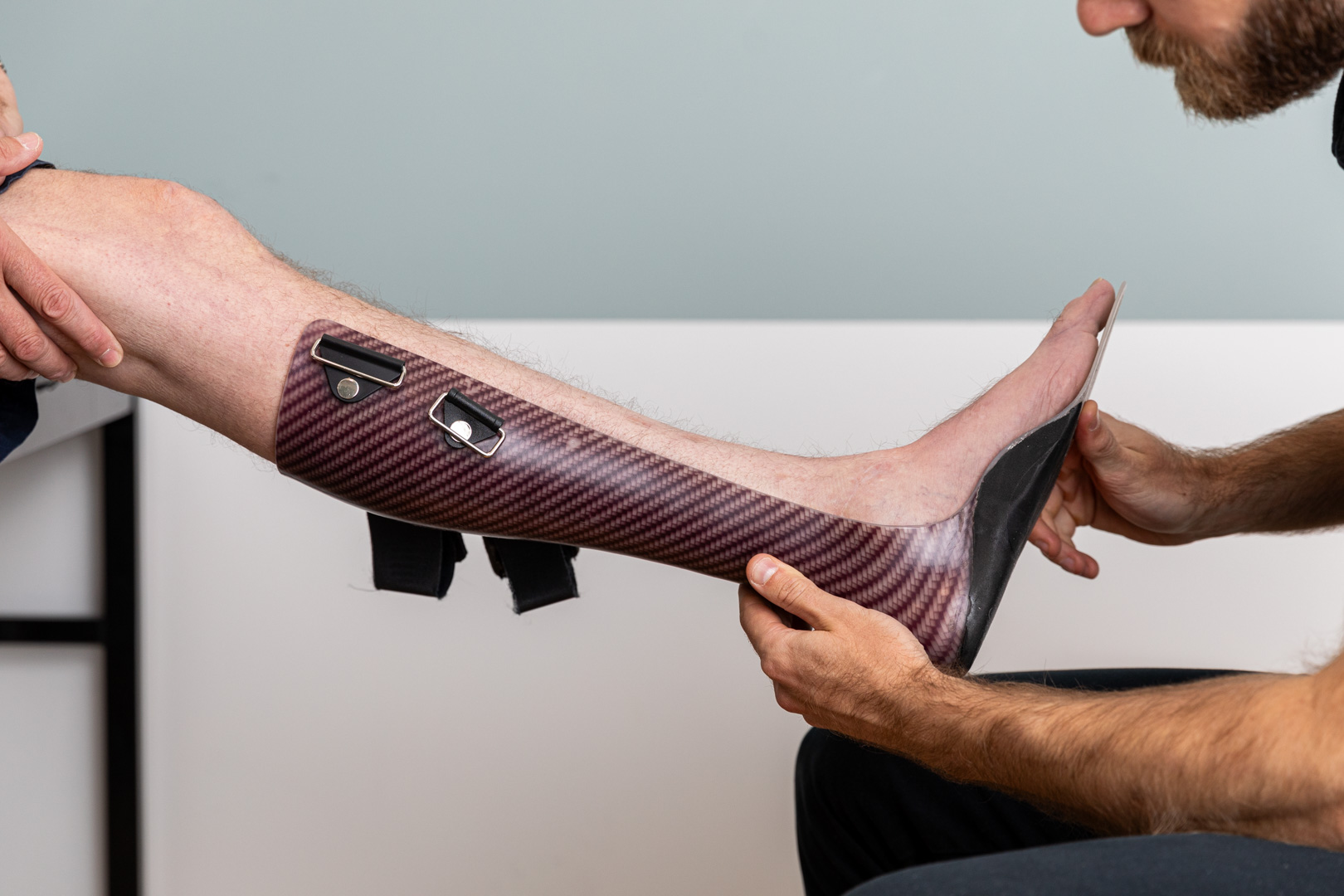If you have lower limb paralysis or weakness and want to enjoy hiking, having the most suitable Ankle-Foot Orthosis (AFO) can make all the difference. Whether you’re tackling rocky terrain, steep gradients, or uneven trails, selecting the best AFO for the job ensures stability and flexibility- keeping you outdoors doing what you love!
Start with the Right Footwear

Hiking boots can be worn with AFOs, provided they offer adequate space for foot entry.
Some hiking boots feature sewn-in tongues, which may require modification to accommodate an AFO. Selecting a boot with a wide opening and adjustable fastening is key to ensuring a comfortable and secure fit.
Otherwise, high quality joggers or low cut hiking boots are often recommended.
A rigid sole with adequate tread for your terrain is important, as is selecting waterproof hiking boots if you’ll be hiking in wet conditions.
As always, be sure to wear new boots ‘in’ with smaller walks before attempting a bigger walk. High quality moisture wicking socks are also excellent additions. For those who are blister prone, two pairs of thinner socks may be better than one thick pair.
Stability vs. Flexibility

The ideal AFO for hiking should provide enough flexibility at the ankle to allow for natural movement and different gradients, while still maintaining sufficient stability to prevent falls.
Unlike walking on flat surfaces, hiking requires a balance between control and dynamism.
If an AFO is too stiff, it may hinder movement on variable terrain. However, if it is too flexible, it may compromise safety.
Striking this fine balance is crucial for an optimal hiking experience – and this is where our Orthotists would love to help.
The Best AFO Options for Hiking

There is no clear best device for everyone, just the right AFO for the right person. Having said that, our general choices for outdoor users and active individuals that enjoy hiking are as follows:
One of the top choices for hiking is the Posterior Dynamic Element (PDE) AFO.
This design includes a posterior strut that comes in different stiffness levels, ranging from category one (very flexible) to category six (highly rigid). The appropriate stiffness depends on the hiker’s body weight, terrain type, and medical condition. A PDE is very strong and durable and has no moving parts that dirt and mud can affect.
Another excellent choice is the NEURO SWING ankle, this joint allows the most ankle movement, and allows patients to walk physiologically while remaining supported. There are waterproof and dirt proof options available. These AFOs are great for fluid motion, reducing compensations and allowing downhill walking without burning out your quads as they allow plantarflexion.
Another excellent option is the NEURO SWING R+ joint, which is particularly useful for navigating gradients.
This innovative AFO features a computerised ankle joint that allows users to adjust alignment based on whether they are walking uphill, downhill, or on flat ground. Such an adaptable system provides superior comfort and control when tackling varied hiking trails.
The R+ can be paired with a KAFO.
For patients with dorsiflexor weakness solely, a device such as a Turbomed AFO may be very useful as it doesn’t contact the foot or ankle and attaches to the shoe which may be more comfortable.
Customisation for Hiking AFOs
For dedicated hikers, a customised AFO may be necessary. A regular walking AFO may not withstand the demands of hiking, which often requires:
- Robust materials: Carbon fibre is preferred over plastic for durability and strength.
- Adjustable struts: If a PDE AFO is already in use for everyday walking, interchangeable struts of varying stiffness may be beneficial.
- Enhanced joint support: Different joint configurations can optimise movement for steep inclines or rugged terrain.

Managing Fatigue and Comfort on the Trail
For individuals recovering from neurological conditions, such as a stroke, gradual progression is key. Similar to a “couch to 5K” approach, hikers should start on flat ground, slowly increasing distance and intensity before moving on to uneven terrain. A carefully selected AFO provides the necessary support while allowing individuals to build endurance safely.
Maintenance and Longevity of AFOs

AFOs are designed to be durable, but regular maintenance is a factor.
Carbon fibre components can experience wear over time, particularly at stress points. While PDE struts do not lose stiffness, the carbon fibre housing them may degrade.
Additionally, certain AFO joints that utilise spring mechanisms require scheduled maintenance, typically every six months, depending on activity levels. A well-maintained AFO supports continued performance and safety.
Real-Life Success Story
One of our most inspiring clients was a hiker who suffered a traumatic nerve injury, affecting his ability to control knee flexion and forward propulsion. Prior to using an AFO, even walking on flat surfaces was a challenge.
However, with a carbon fibre AFO featuring an anterior front shell for knee support, he successfully hiked multiple mountains in South Africa with ease.